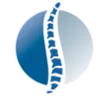Is chiropractic effective?
Research has shown chiropractic/manipulative care to be safe and effective when compared to other forms of healthcare. On one level a chiropractic treatment is effective if the care enhances or restores the nervous system's optimal capacity to communicate nerve messages to and from the brain. On a second level chiropractic treatment is effective if the care reduces or eliminates the underlying symptoms that relief was sought for. On a third level chiropractic treatment is effective if the care reduces the progression of dysfunction so commonly seen with normal wear and tear over the years.
All inclusive chiropractic care is a proactive approach with emphasis on prevention of dysfunction or disease. Most other western healing systems are reactive in that various screenings, physical exams and/or laboratory tests are run, over and over for years, until some disease or disorder is finally discovered and treatment recommended. It is now well understood that 65% of our health problems are lifestyle-related versus 35% genetics-related. Far better to dramatically lower the risk of developing type II diabetes and related health problems than to wait until insulin injections or limb amputations are recommended.
Why should I see a Chiropractor?
Seeing a chiropractor is not just for back or neck pain. Chiropractic care is an excellent way to keep your whole body at its peak performance. By combining spinal care with physical fitness instruction, proper nutrition and stress management, chiropractors are able treat a wide range of conditions.
What is a Subluxation?
During normal day to day activities any of the joints of our body (especially spinal joints) can become fixated or kinked. This kinking of the joint is referred to by Chiropractic Doctors as a subluxation or sometimes as a fixation. Movement can often release these kinked joints so exercise and stretching should be a regular, daily routine.
Subluxations may be caused by something as seemingly trivial as a slip or near fall to something as obviously traumatic as a car crash. Some research suggests spinal subluxations can be initiated with sufficient emotional or chemical/nutritional stress. Besides causing pain and disability, subluxated spinal vertebra can irritate the associated nerves which can negatively influence our basic physiology. The subluxation can and often does interrupt the normal nerve flow to and from the brain. If allowed to persist, the chronic interruption of critical messages from the brain to every cell in the body can be a trigger for a multitude of health problems.
How does chiropractic care work?
Chiropractic is an overall way of looking at the human body. It's based on the idea that the body is self-sustaining and self-healing. The body is in essence completely controlled by the brain through its connection via the spinal cord and the vast networks of nerves that make up the body. When this system is not functioning at its peak, the overall performance of the human body is lacking.
In the medical world, pharmaceutical medicines are the primary treatment of choice. While some heath conditions may require the administration of medications, convenience is often the driver of medical treatment choices. Unfortunately, the use of medications often are associated with side effects such as bad reactions or addictions.
The chiropractic approach has always been as an alternative to conventional medicine. Chiropractic doctors analyze the patient's condition for evidence of obstructions or interference to the body's self-healing efforts. Chiropractic treatment takes into account many factors which have been practiced by healers for centuries with great success including spinal adjustments or manipulation.
What is an adjustment?
An adjustment (sometimes referred to as manipulation) is the chiropractor's method of physical treatment of a fixated or subluxated joint. An adjustment is utilized to restore the joint's normal movement parameters. The adjustment is a safe, simple procedure that often produces dramatic relief of many painful conditions.
The administration of an adjustment involves the chiropractor's use of his hands or instrument to apply varying degrees of pressure to move a joint or a vertebrae in order to restore normal joint movement. The application of pressure is accomplished with a quick motion which is often without any discomfort. Oftentimes the joint will "pop" such as what occurs when someone pops their knuckles.This popping noise occurs when the lubricant fluid inside the joint space expands to fill the void inside the joint capsule created with the adjustment.
What can I expect from my visit to a chiropractor?
Going to the Chiropractor is a new experience for many. Most new patient's are recommended for care by friends or family. Many will learn about this safe, gentle treatment through online research. Some will approach their first visit to a chiropractor as a last effort after trying everything else first. In any case, your first visit to the chiropractor will really be about getting to know the chiropractor and discussing your history, current condition and goals.
You can expect some aspects of your first visit to resemble any other first doctor's visit but with a special emphasis on your spine and on your lifestyle.
What results can I expect from treatment?
Chiropractic is based on the idea of removing imbalances in an effort to allow the body to heal itself. It should be understood that healing is a process. While it is not uncommon to get relief of pain from even one chiropractic adjustment it is not the norm. Most patients will see steady improvement over the first few weeks. Some variables that can effect the outcome timeline include: 1) the patient's overall condition of health, 2) the age of the patient, 3) acuteness or chronicity of the condition, 4) cause of condition, 5) the patient's ability to follow recommended treatment plan, 6) the patient's ability to follow home care recommendations.
